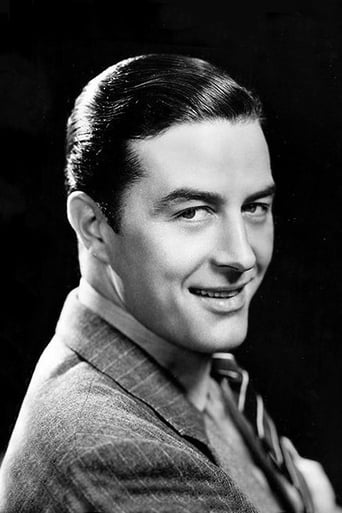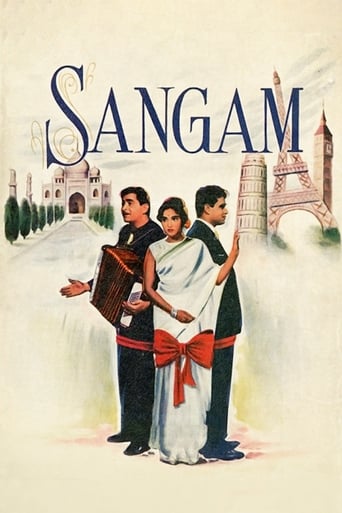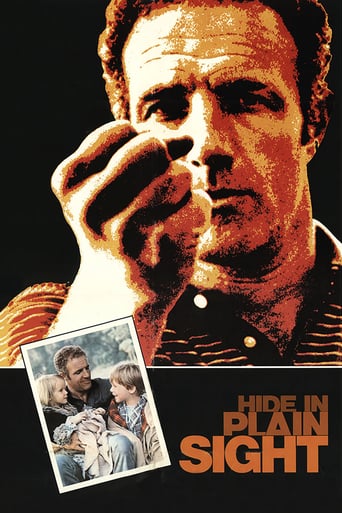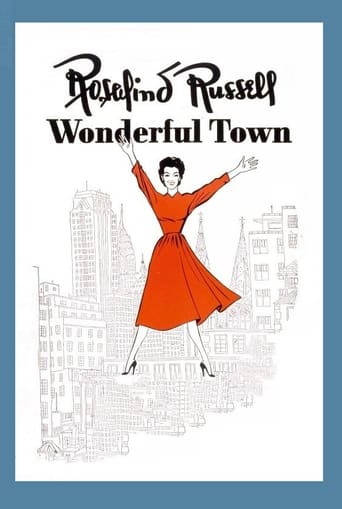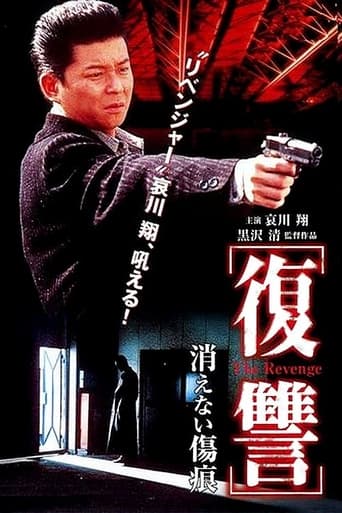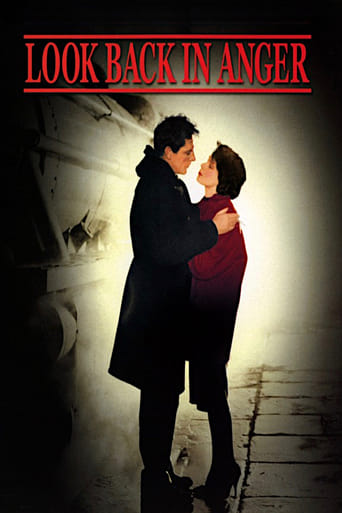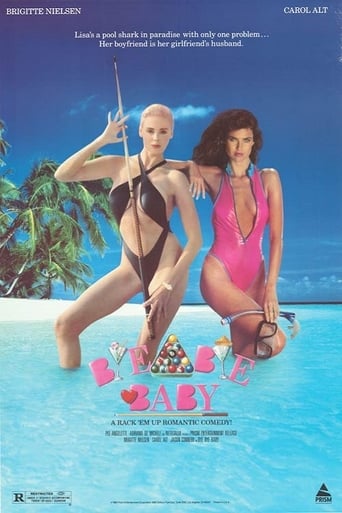
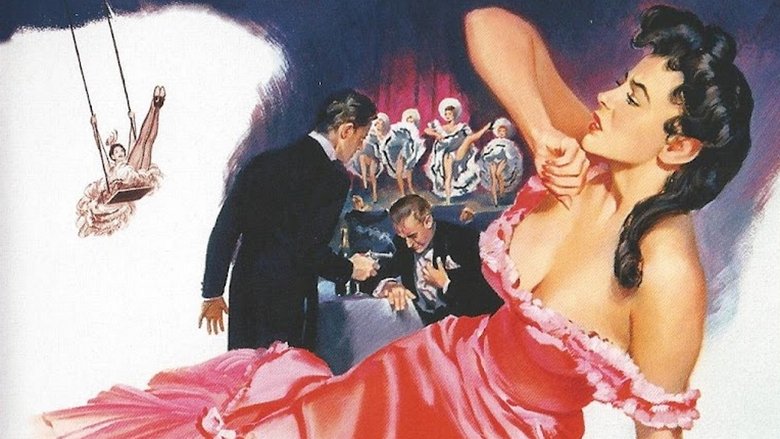
The Girl in the Red Velvet Swing (1955)
Broadway showgirl Evelyn Nesbit (Joan Collins) is the object of affection of two men: playboy architect Stanford White (Ray Milland) and wealthy but unstable Harry Thaw (Farley Granger). She marries Thaw, but White’s continued pursuit puts him in the path of Thaw’s volatile temper. Inspired by true events that occurred at the turn of the 20th century.
Watch Trailer
Cast


Similar titles
Reviews
Here is the story of a girl who had the best of both worlds before it all came tumbling down in a murder.There was a very good performance by Joan Collins as Evelyn Nesbit. Well supported-by Farley Granger, the millionaire whose insanity got the best of him and a wonderful performance by Ray Milland as Sandford White, her older lover, a brilliant architect whose lust for Nesbit was his ultimate downfall.Glenda Farrell was superb as Nesbit's mother, especially when she realized that she could no longer control her daughter's lust.A story of how fate brought the three together and how fate kept the rivalry between both men until the Granger character ended it all by killing White.The last scene of the film showed who Nesbit really loved by her being on a red velvet swing in Atlantic City, New Jersey.
Here's my guess as to why this 1955 "Trial-of-the-Century" drama (which highlighted the real-life Thaw-White murder case from 1906) failed to deliver a substantial enough wallop and, thus, hold onto this viewer's rapt attention.It was because the real-life Evelyn Nesbit (who, at a much younger age, had played a pivotal part in this murder case) was now playing "technical adviser" on the set of this 1955 picture. And, as a result, nothing in the story could be filmed without her prior consent.And because of this veto power that Nesbit (72 at the time) wielded, her youthful character in the story was white-washed, and made out to be the sweetest, most naive, little innocent bystander in the scheme of things.And, on top of that, the sexual implications of Nesbit's torrid affair, at 17, with a man 3 times her age was down-played so unrealistically as to make it appear as if she and Stanford White were merely platonic friends.As a result of all of this down-playing (at Nesbit's insistence) this film's story was virtually rendered flat and uninspired, with only shallow and apathetic performances given by all of its principal players.I honestly believe that this 1955 picture could've been real dynamite story-telling had Evelyn Nesbit not had such a strangle-hold on its subject matter, as she adamantly insisted that her once ravishing "Gibson Girl" image remain intact, thus making certain that she was portrayed as the absolute epitome of "Turn of the Century" innocence.Directed by Richard Fleischer (a fairly notable director), this disappointing melodrama suffered, as well, from a curious lack of essential close-ups.
Set in New York in the early years of the 20th century, a stunning Joan Collins plays the title role, in which there are actually two scenes where she is the girl in the red velvet swing, both of which are fantastic. Both scenes give a lot of credit to the director, cinematographer, set designers, and art director. The film is beautiful to watch throughout, mixing sets from early Broadway stage to crowded fancy New York restaurants. Collins' part as a teenage chorus girl whose beauty is such that she bowls over both Ray Milland who plays a wealthy and well-established New York architect and Farley Granger an heir to a fortune from Pittsburgh, who both throw tons of money her way. What starts off looking like it's going to be a musical comedy actually gets fairly involved and intense, leading to a great and ironic ending.
The story of the love triangle of Stanford White, Evelyn Nesbit and Harry Thaw was a HUGE story back in the early 20th century. The resulting trial was dubbed 'the trial of the century'...that is until the NEXT trial of the century occurred soon after!!! The story had it all--sex, insanity, jealousy, a beautiful young nymph and murder! And, as a result, the story really could not have been adequately told until more recently--mostly due to the Production Code which forbade a frank discussion of the sex lives of these folks. So, when I watched "The Girl on the Red Velvet Swing", I realized that it was so sanitized that it was practically a work of fiction--after all, the real story never would have passed the censor boards! In the early 1980s, the film "Ragtime" explored this sensational crime, but only on the periphery. The sensational murder was portrayed, but the lives and personalities of those involved were pretty much a cypher. You can't entirely blame the film makers, as the trial and murder were not the main focus of the film. So, because of a sanitized and sketchy version of this affair, you are left wanting more--the true and complete story--a story that I still do not fully understand."The Girl on the Red Velvet Swing" is mostly told from the viewpoint of Stanford White and Nesbit. While Harry Thaw is definitely in the film, he's mostly shown as a quick-tempered and one-dimensional nut. While this might just be the real Thaw, it just seemed a bit vague. And as for White and Nesbit, you'd think that their relationship was 100% platonic...which it wasn't. In fact, no real hint of sex between ANYONE is really evident in the film! As a result, the actors all seemed a bit flat--like there was so much more that was unsaid. Joan Collins (Nesbit) was very pretty and did fair in the film but not much more. Ray Milland (White) was rather gallant...too gallant. And, Farley Granger (Thaw) was mostly angry and nutty throughout! None of these characters were written well and the actors had little with which to work. As a result, the looked pretty but was pretty empty as well. It's actually pretty remarkable how dull this story was considering how exciting the actual tale was! By comparison, the story of Leopold & Loeb (in "Compulsion"--the next 'trial of the century' that took place in the 1920s) was fascinating, deep and involved (with a hint of a homosexual undercurrent)--even though it, too, was made in the 1950s. This movie is aching for a complete remake. In fact, it might even do well as a mini-series--as there is a lot to this weird story.This film is like a pie made entirely of meringue. It looks nice but is too sweet and not particularly filling.


